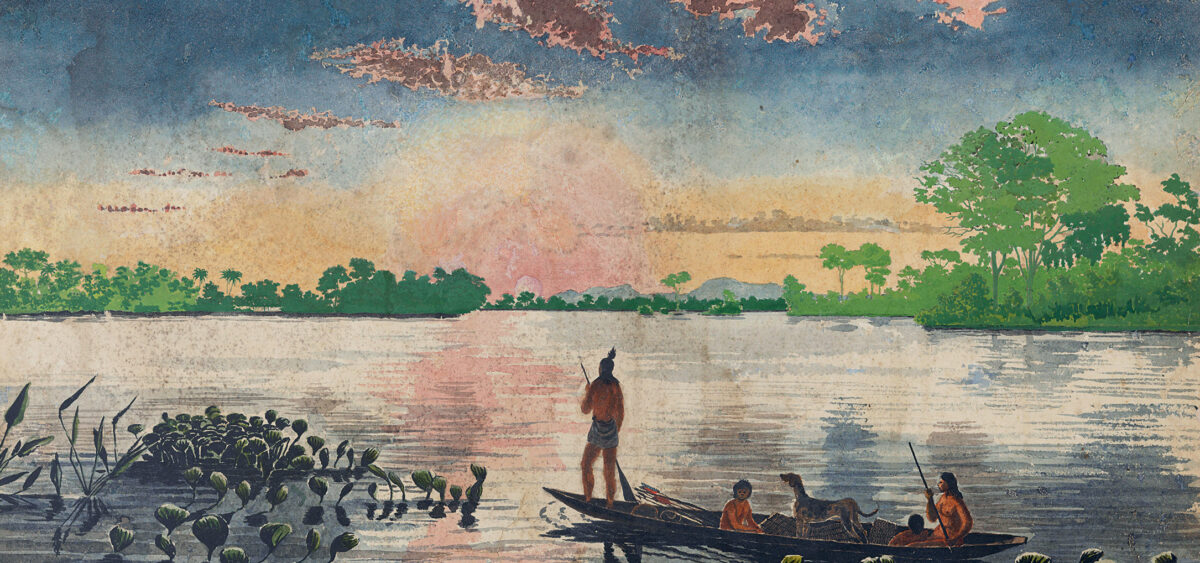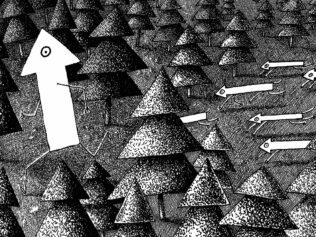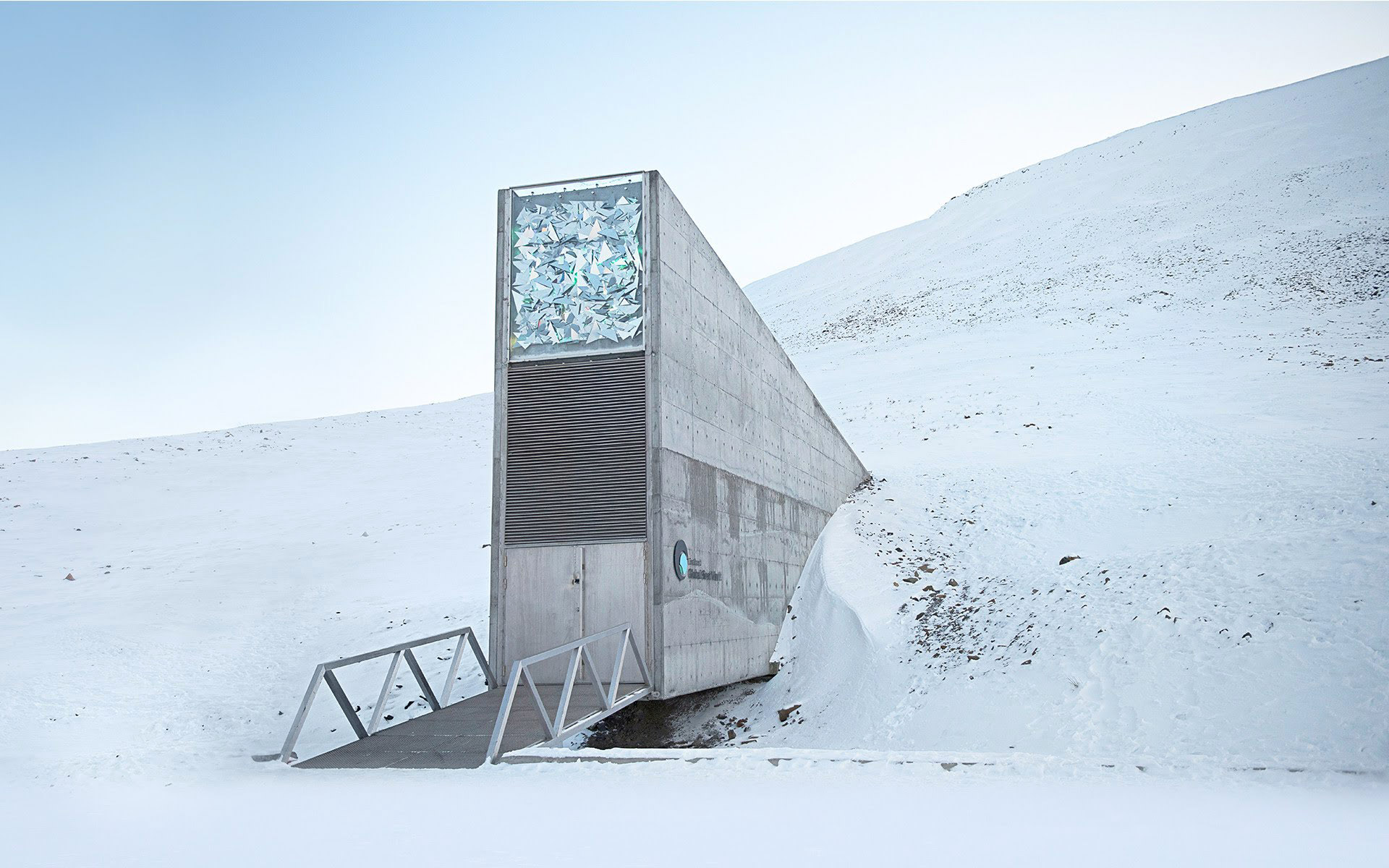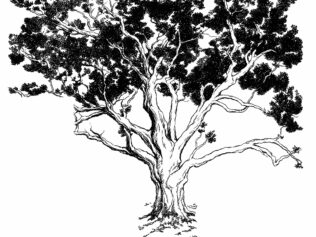
He invented photography before Daguerre. He travelled across the Amazon jungle, found a way to document the songs of birds without audio recording, and reproduced political pamphlets without the aid of a printing press. And yet, he was forgotten by the world for over a century.
“I am certain that printing using sunlight will be possible in the future,” Florence noted on 15th January 1833. The French inventor was in his late twenties. He was sitting at his desk in a picturesque Brazilian fazenda in São Carlos, a small town with a population of several thousand, 96 kilometres north of São Paulo. The summer was in full bloom. It was a time when many Europeans were trying to capture the light of the sun on paper, among them the painter Louis Jacques Daguerre. How come everyone knows Daguerre’s name and almost nobody has heard of Hércules Florence, even though he was the first to harness the sunlight? It was the surrealist artist André Breton who wrote that: “The greatest weakness of contemporary thought seems to lie in the extravagant overstatement of the known versus what is left to know.” Hércules Florence would probably agree.
Becoming Robinson Crusoe
Antoine Hércules Romuald Florence was born in Nice on 29th February 1804 – a date both special and unfortunate, as he could only celebrate his actual birthday once every four years. The age of industrial and scientific revolution was on the rise. Just a few days prior, the first steam locomotive journey took place in Abercynon in Wales. One month after Florence’s birth the Code civil des Français (also known as the Napoleonic Code) was drafted – it was the first modern legal code in Europe. When Napoleon Bonaparte was crowned emperor of the French, Hércules was already strong enough to keep his head up straight for a long while and look around without help. His remarkable sense of observation would remain one of his most beneficial qualities throughout life.
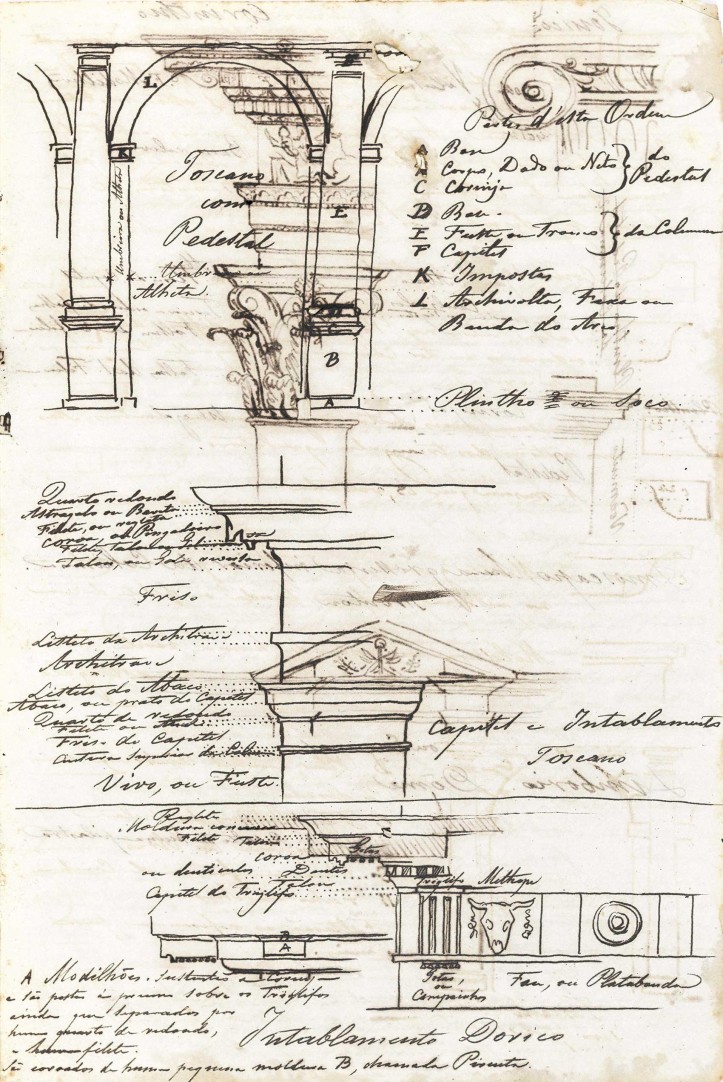
His father Arnoud was an army surgeon and drawing teacher who passed away three years after his son’s birth. His mother, Augustine, was originally from Monaco. As the boy started showing the first signs of artistic talent, Augustine encouraged him to turn it into a source of income, and so teenage Hércules took up a job as a calligrapher for the city council. Still, he was not at all enamoured with a clerk’s life. He would spend hours on end reading Daniel Defoe’s Robinson Crusoe, dreaming that one day he too “would be satisfied with nothing but going to the sea.”
“That pleasure led me to geography and I spent long hours musing over a good atlas that we had at home. There was no spot on the globe to which I didn’t wish to go one day. The Mediterranean Sea seemed very small, and I only intended to go through it as one would go through a lake in the country before abandoning it,”[1] he reminisced many years later in his autobiography L’Ami des Arts livré a lui-même ou Recherches et découvertes sur différents sujets [A Friend of the Arts on his Own or Researches and Discoveries About Different Subjects]. Hércules’s mother was less than impressed with her son’s plans, but eventually she relented, and young Florence went off to Antwerp to start his new life. Upon arrival, he found out the job he was promised was no longer available. And since he didn’t have a penny to his name, he had no other choice but to walk all the way back home[3] .
If Florence’s family were hoping this misadventure would deter the boy from further travels, they were in for a disappointment. Two years later, in February 1824, 20-year-old Hércules boarded the ship “Marie-Thérèse” and left Europe for good. His destination of choice: South America. After 45 days of travel, Florence arrived in Rio de Janeiro. He remembered his first impression as follows: “Everything announced to me that I was in the New World: the canoes sliding around the frigate, the blacks, the fruit they brought, everything was new for me. We disembarked and the first impression that I experienced was accompanied by something distressful. Could it have been premonition? The sight of this multicoloured population of whites, blacks and mulattoes in all shades saddened me a little. I crossed the small Capim square, where a black man, who had been tied to a pillory, was being whipped. That sight revolted me because I was a novice on black slavery. I began to curse a people who pretended to be charitable but whipped blacks.”
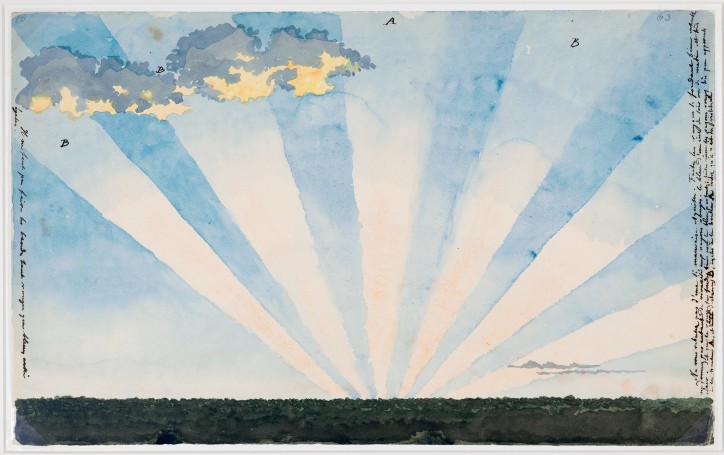
Florence arrived in Brazil two years after the country proclaimed its independence. In September 1822, Prince Pedro stood at the bank of the Ipiranga river and cried: “Independence or death!” And so, with one swift cut of his sword, Dom Pedro cut the great colony off from Portugal, ruled by his father Dom João VI. Pedro was then crowned emperor in a gesture intended as a nod to Napoleon Bonaparte and his vision of the new world, where imperialism meets modernization. But as for the time being, the colonial order was still in place. Brazil had a population of four million people, one-third of which were slaves. The sugar trade, which until recently had been the most profitable industry in the country, was starting to falter. However, another business was beginning to flourish. By 1850, almost every other cup of coffee in the world came from Brazil. And Florence was going to make money out of both sugar and coffee.
Soon upon his arrival Florence took on a position in a clothing store in Rio, where he worked as a cashier, apparently forgoing his former plan to become a sailor (perhaps the cruise was less pleasant than his walk across the Alps). After a year, he moved on to a new job in a typography workshop and bookshop owned by fellow Frenchman Pierre Plancher. Mr. Plancher was an outspoken liberal who had been convicted in France for his subversive political activity. He was also a founder of Jornal do Commercio, which was rapidly gaining popularity – first in Rio de Janeiro, and then across the country. Meanwhile, young Florence would soak up his employer’s liberal ideals as well as his love for the press.
While working for Plancher, Hércules decided to put his artistic talent to use again. He placed an announcement in a local newspaper, informing that “all of those who want to reproduce geographic maps, architectural plans and drawings of any object can speak to Hércules Florence at Mr. Plancher’s house on Rua do Cano 113, and be certain that he will readily draw the assigned work with all necessary care and accuracy.” He soon learned that Georg Heinrich von Langsdorff, the Russian General Consul in Rio de Janeiro, was planning an expedition to the very heart of the Amazon jungle. And he was looking for a draftsman to document this extraordinary quest.
Bored to tears with jungle fears
No self-respecting scientist or explorer from the other side of the Atlantic Ocean could miss a chance to visit Baron von Langsdorff’s residence at Fazenda da Mandioca. Von Langsdorff was a famed German-Russian aristocrat, physician, naturalist, and a member of the Saint Petersburg Academy of Sciences. Since 1813, the baron had been on several expeditions to remote areas of the country, namely to Minas Gerais Province to study the nature of the Amazon. However, his most remarkable excursion began in 1825, and that was the trip joined by Hércules Florence.
They spent four months working in Porto Feliz in São Paulo Province – this was when Florence fell in love with Maria Angélica, whose father was a local liberal politician. Afterwards, the expedition moved towards the sertão and to the Mato Grosso and Grão-Pará rivers. It took them five years to travel over 17,000 kilometres, collecting information on the indigenous people of the Amazon and exploring its fauna and flora. They had numerous adventures, but their luck ran dry very soon: Aimé-Adrien Taunay, the second draftsman hired for the trip, drowned during the crossing of the Guaporé River. Their astronomer Nestor Rubtzov caught beriberi fever, which caused him to lose his mind, and many expedition members contracted malaria. Von Langsdorff, stricken by tropical fever, had lost his memory. All these misfortunes were not enough to suppress Hércules’s sense of adventure. His brief diary entries from that time describe the journey as “exhausting, full of misery and misfortune.” He was bored. “To see one Brazilian village is to see nearly all of them,” he wrote (Florence often complained that his new home country was rich in nature, but not in culture). He considered painting watercolour landscapes, too trite to bother with the task. He worried he had nothing left to discover, to invent, to explore.
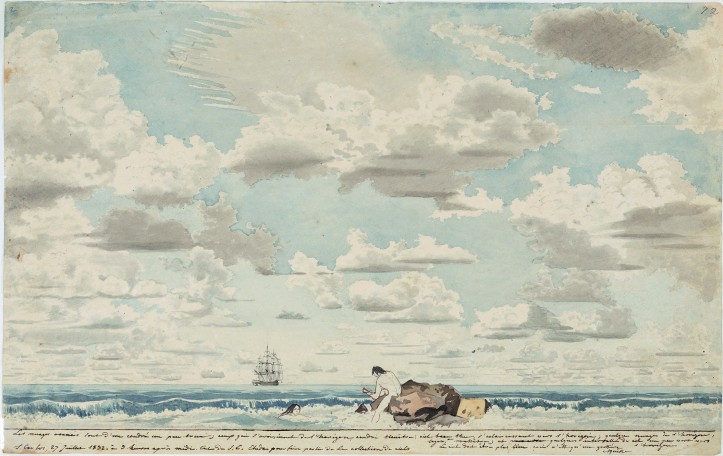
But the jungle was restless with sound: whistling, chirping, clucking, hissing, squeaking, whirring. Araponga birds (which had a distinctive blue beak) emitted rhythmical metallic cries that sounded like a hammer hitting an anvil. Anhu-póca (a turkey-like bird, according to Florence’s drawings) sang in a surprisingly loud and melodic voice. Hércules had an idea: he decided he would attempt not just to document the looks of the animals around him, but also the sounds they made. He came up with a system, which he called “zoophonia”. He was rather modest about it. “When we consider how many animal voices change constantly, it seems nearly impossible to write them down without having an infinite amount of symbols at hand … The method I presented here is merely the first attempt.”
Drawing sound with light
Upon their return to Rio in 1829, all drawings and watercolours made by Florence during the expedition were sent to Russia and locked up in archives, where they remained unseen for many years. Meanwhile, Hérculess was planning to publish his work on zoophonia. This, however, was not a simple task. Until recently, Brazilians had considered books and newspapers so dangerous that access to a printing press was severely limited. The whole mission seemed so difficult that Florence decided to look for a more straightforward way to share his ideas with the general public. He began studying polygraphy.
Perhaps he still looked up to his childhood hero, Robinson Crusoe, remembering his self-sufficient creativity. “And here I must needs observe, that […] every man may be, in time, master of every mechanic art. I had never handled a tool in my life; and yet, in time, by labour, application, and contrivance, I found at last that I wanted nothing but I could have made it, especially if I had had tools. However, I made abundance of things, even without tools; and some with no more tools than an adze and a hatchet, which perhaps were never made that way before, and that with infinite labour,” said Crusoe, and Florence followed his lead. But instead of an adze and a hatchet, he reached for a box with a tiny hole in it (known as camera obscura), glass panes and silver nitrate, following advice he obtained from the chemist Joaquim Corrêa de Mello, his neighbour from Vila de São Carlos (today’s Campinas). Florence decided to capture images using the most commonly available resource in existence: sunlight. He wanted to harness it, to turn it into clear, lasting pictures.
Meanwhile, artists and scientists in Europe were making similar attempts. A few years earlier, French inventor Joseph Nicéphore Niépce managed to capture the view from his window on a pewter plate covered with bitumen of Judea. However, it took many hours of exposure to light to create a negative that could be successfully reproduced on paper. Niépce kept trying, in collaboration with the painter Louis Jacques Daguerre. Finally, in 1839, Daguerre announced the results of their work, describing a technique that allowed the creation of an image using a copper sheet covered with a layer of silver iodide. The picture was then developed with mercury fumes. He named it the ‘daguerreotype’, dismissing Niépce’s contribution to the success. Unlike those two, Florence’s initial goal was not to immortalize solemn faces and street views. What he cared about were text and illustrations. In early 1833, he managed to copy the phrase he wrote down: “And you, Divine Sun, lend me your rays”. The Divine Sun did, in fact, cooperate. The first experiment was followed by making photographic copies of pharmaceutical labels, created most likely for Joaquim Corrêa de Mello, who helped Florence to explore the properties of silver nitrate. Florence had, in fact, created something similar to a photocopier. Further efforts allowed him to take a picture of the Campinas prison. Florence named the new technique photographie – drawing with light.
However, Florence’s invention didn’t help him propagate zoophonia. Eventually, he relented, and in 1836 he had the first printing press brought to Campinas. This machine was used to print the periodical O Paulista, the first Brazilian newspaper published outside the capital. Florence’s workshop, which until then specialized in printing advertising leaflets and business card, suddenly became a centre of liberal thought.
The sun and the shadow
Art revolution, painting with light, nature creating its own images – that’s how Jornal do Commercio described the new invention: the daguerreotype. Florence found out from a friend. They were sitting by a moonlit river. “I felt a stroke in my heart, in my blood, in the marrow of my bones, in my whole being. I repressed inside myself the most severe shock that I had yet experienced and I did not lose countenance,” he noted. Six months later, he sent a letter to the newspaper A Phenix, in which he wrote that he had spent the last nine years developing his invention. First, he invented polygraphy (a technique of reproducing text and images using sunlight, stencils, and various chemicals), and later, a way to print images created with the light inside camera obscura. “I will not dispute anyone’s discoveries, because one same idea can come to two persons, and because I always considered my findings precarious,” wrote Florence. The journalists suggested readers compare the dates and decide where the art of photography was really born – in Europe or Brazil.
The French government rewarded Daguerre with a life pension. Florence kept writing letters to the French Academy of Sciences, asking: “Who will reward me for my invention of polygraphy? Photography is the wonder of the century. I had also already established the grounds, foreseen this art in all its majesty. I did it [photography] before Daguerre’s process, but I worked in exile. I printed by means of sunlight seven years before photography was first talked about. I had already given it that name; however, all honours to Daguerre.” The Academy, however, dismissed Florence with curt responses, as they would do with any other crackpot.
Florence’s three worlds
Soft light, warm colours, 20 x 27 centimetres. In the foreground, there is a young woman with a child on her lap: Florence’s second wife, Carolina, with baby Jorge. Next to them is Ataliba, the oldest son from this marriage, born in 1855. In the background, one can see various artistic and scientific devices. To the left, a polygraphy workshop; a palette to the right. Above it, there is an open window with abundant greenery behind, and to its right, a map or the world. He gave this watercolour a title: Florence’s three worlds.
The first world: his family. Florence’s first wife Maria Angélica gave him 13 children. Carolina Krug, his second spouse, gave him seven. She also founded a school for girls in São Carlos, which played an important role in developing the education system in Brazil.
The second world: art and inventions. Florence wasn’t lucky enough to earn the recognition he deserved, but he didn’t let it stop him. In the early 1840s, he created a unique type of paper money, hoping it would prevent fraud, but he never profited from his invention (not even during the financial crisis in the 1860s). He patented reproduction techniques that he named “stereopainting” and “solar painting”, although we don’t know how they were supposed to work. Florence also came up with a concept he called “the Brazilian Order of Architecture”, based on three classical orders: Doric, Ionic, and Corinthian. Column shapes were inspired by an endemic species of Brazilian palm Attalea oleifera in the Arecaceae family, called pindoba. Not a single edifice was ever built using this style, in Brazil or elsewhere.
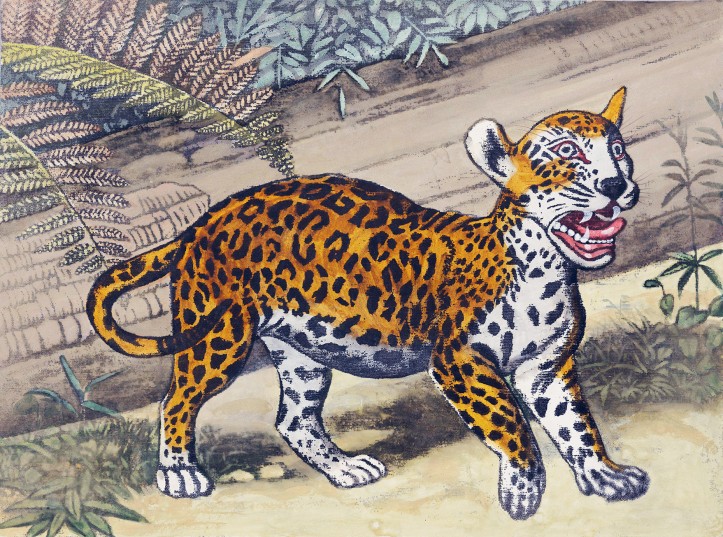
The third world: nature. In the early 1970s, Boris Kossoy, a photographer and historian who was also fiercely passionate about Florence’s discoveries, proved that the Frenchman did invent photography in 1833. Kossoy believes that the flourishing nature seen from the open window is a reference to Florence’s expedition to the Amazon jungle.
“I have always foreseen that my discoveries, which my isolation prevented me from making them known, which the lack of materials prevented me from developing, would not fail to emerge in other countries, more favourable to the progress of intelligence. I felt that my works would not be useful, neither to me, nor to society,” wrote Florence. He passed away in Campinas, on 27th March 1879.
Objective chance
Why is there no mention of Hércules Florence in textbooks and encyclopedias? Boris Kossoy states that Florence’s achievement was an “isolated discovery of photography in Brazil.” However, zoophonia did become an inspiration for contemporary musicians and scientists. It prompted ornithologist Jacques Vielliard to establish a Laboratory of Bioacoustics at the University of Campinas, where researchers study the sounds of animals, and to set up two extensive sound archives: one for the sounds of the Neotropics, and the other for the sounds of the Amazon jungle. A contemporary opera called Hércules Florence was recently staged in Argentina, and the National Museum in Monaco held an exhibition featuring nearly 400 of Florence’s works, coming mostly from his family collection in São Paulo.
Izabela Łęska, a visual artist and lecturer at the Fine Arts Academy in Katowice, organized an exhibition, Vice Versa: The Life of Hércules Florence. She discovered Florence by accident while researching Brazil-related topics. Her mother travelled there, and after she came back, she showed her daughter the photos taken with a camera Izabela lent her. Inexplicably, all the pictures were black. “My work focuses on the idea of objective chance, as described by André Breton, the pope of surrealists. It’s an ephemeral category, notoriously difficult to research. But this camera and those ruined photographs – I knew it was objective chance. What happened was nothing short of magic,” said Łęska. She can also see the role objective chance played in Florence’s story. His curiosity led him across the ocean, to a place too remote for his achievements to be noticed. He chased the light, and yet he perished in darkness.
“My imagination is full of forecasts and discoveries; and I am forced to postpone my ideas, and perhaps, to see them die with me,” despaired Hércules Florence. At least this time he was wrong.
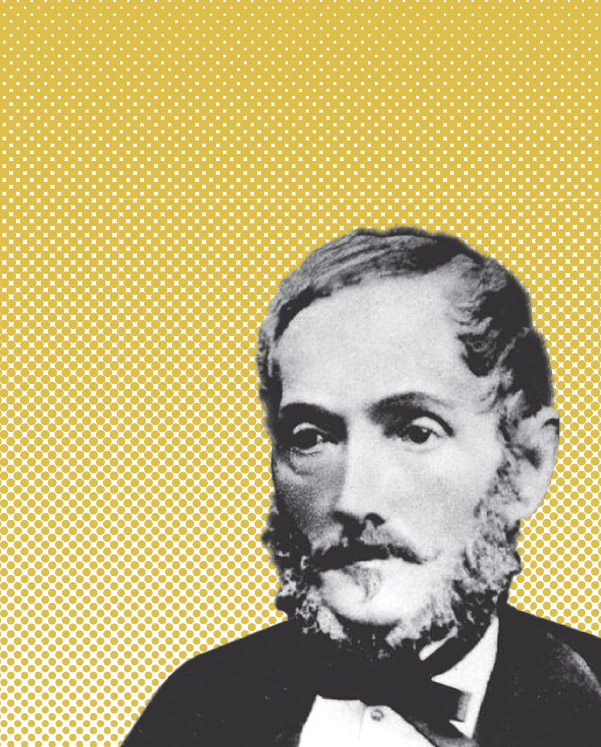
***
The article was written using the following sources: The Pioneering Photographic Work of Hercule Florence by Boris Kossoy and Light Writing in the Tropics by Natalia Brizuela.
Translated from the Polish by Aga Zano


